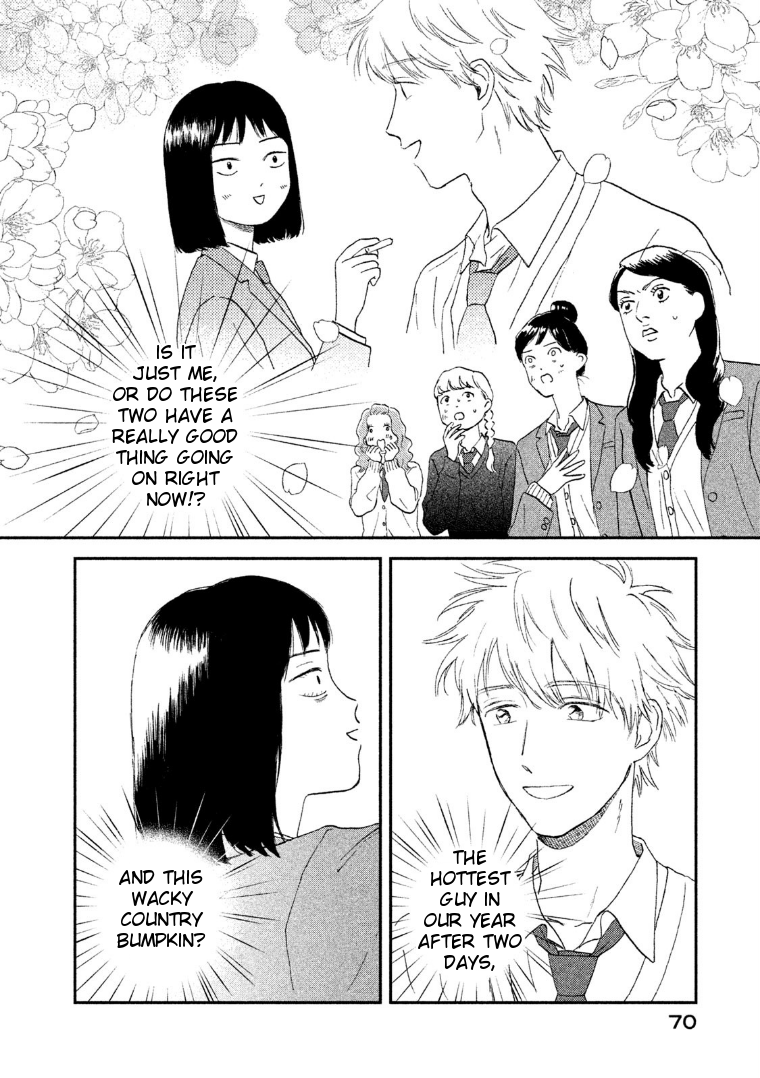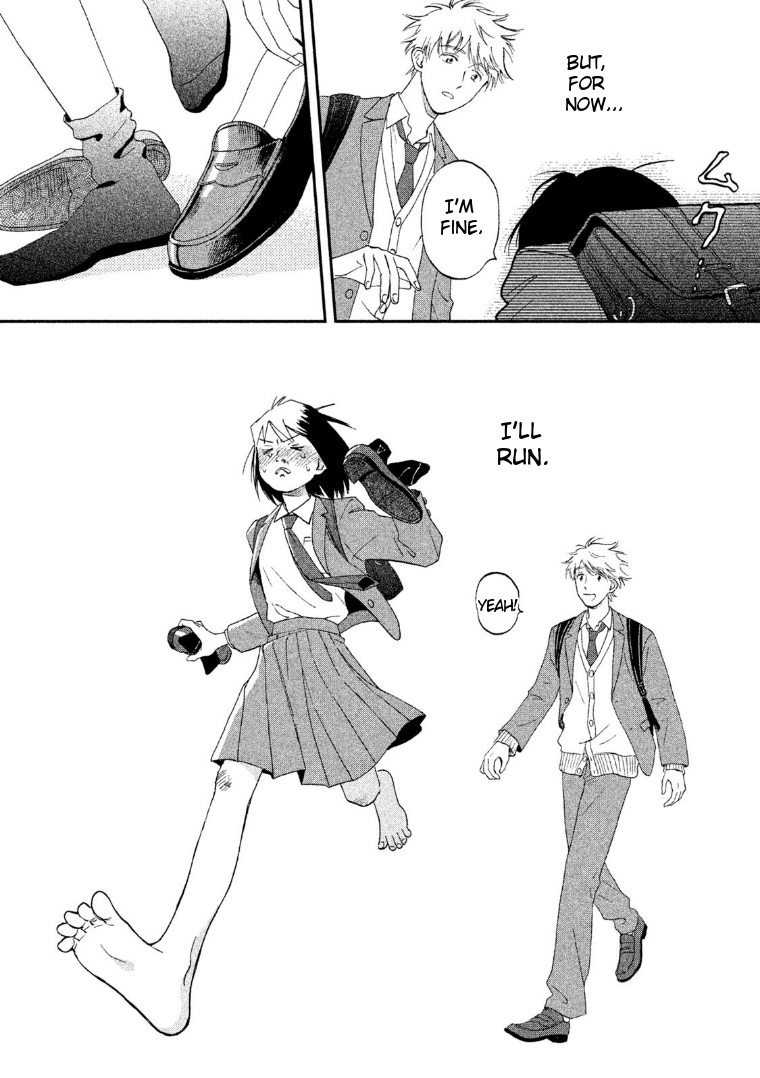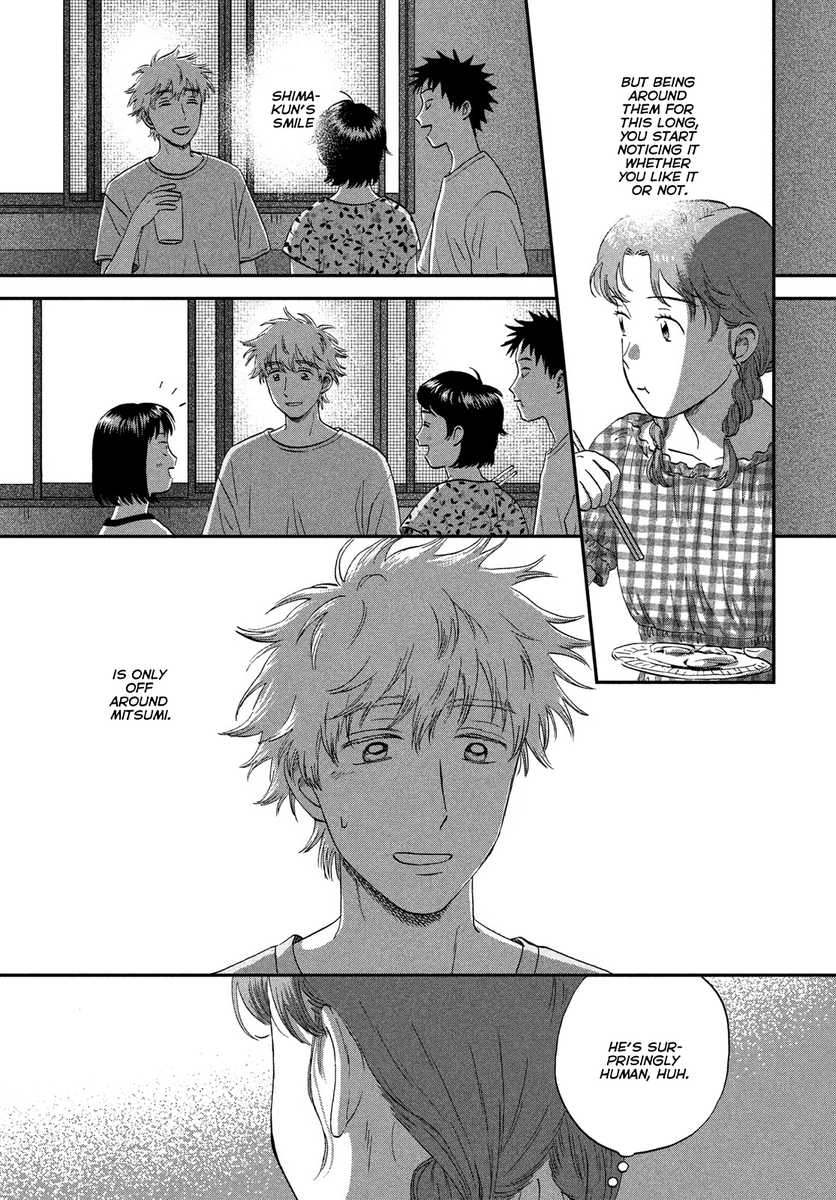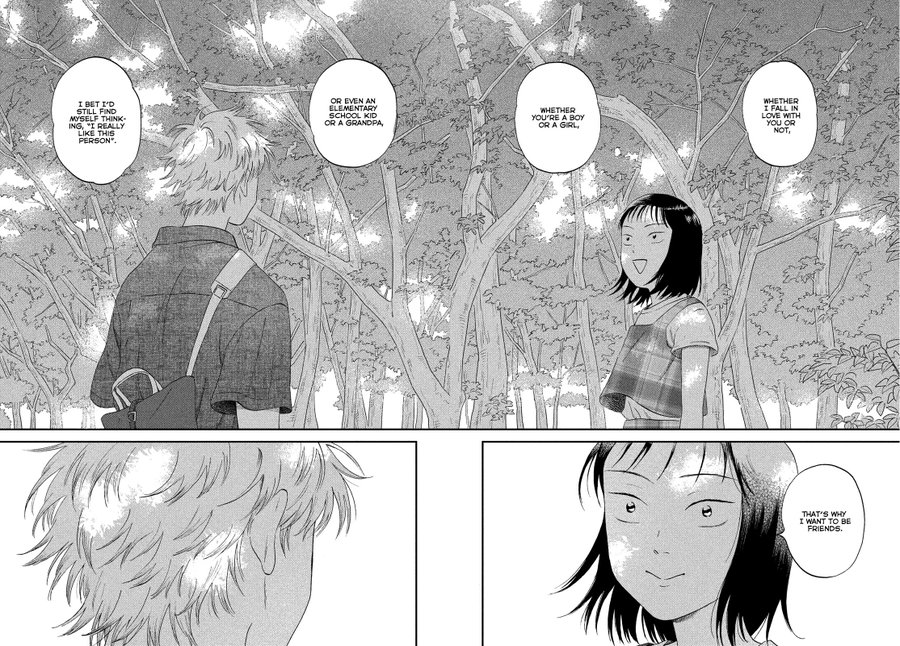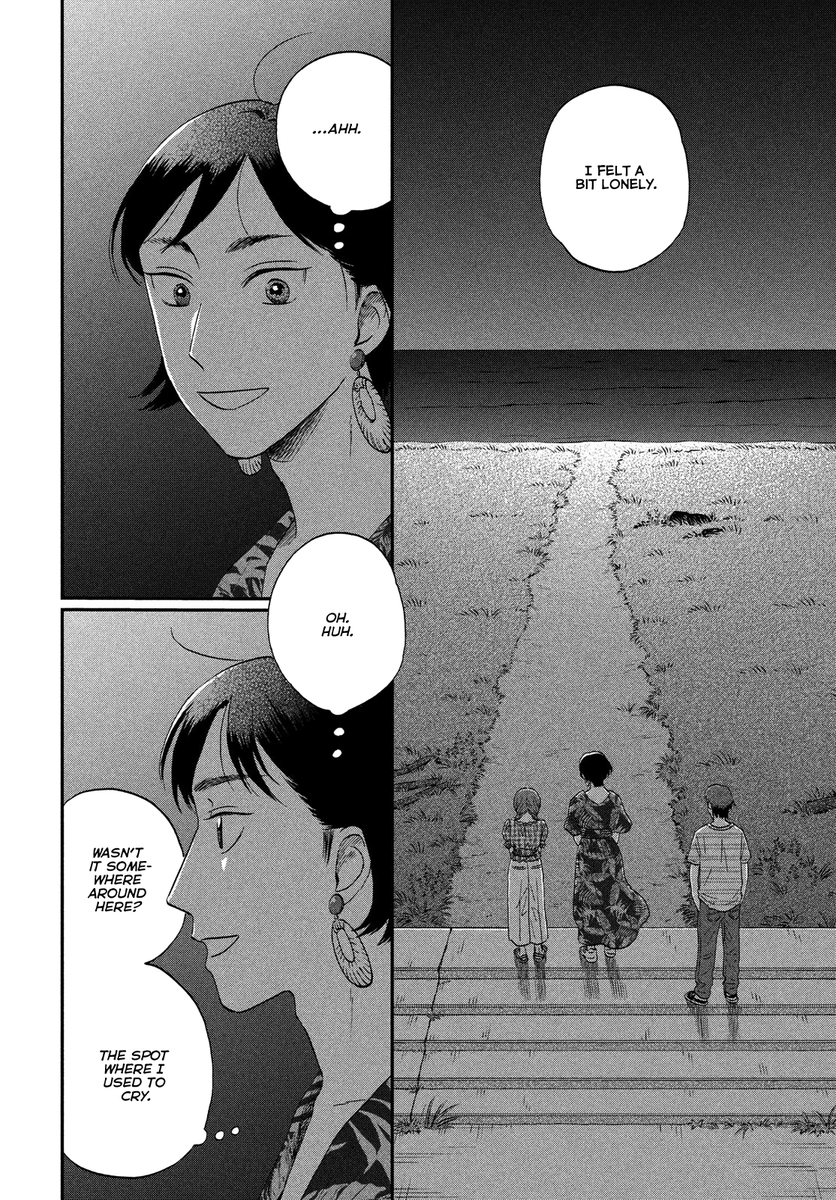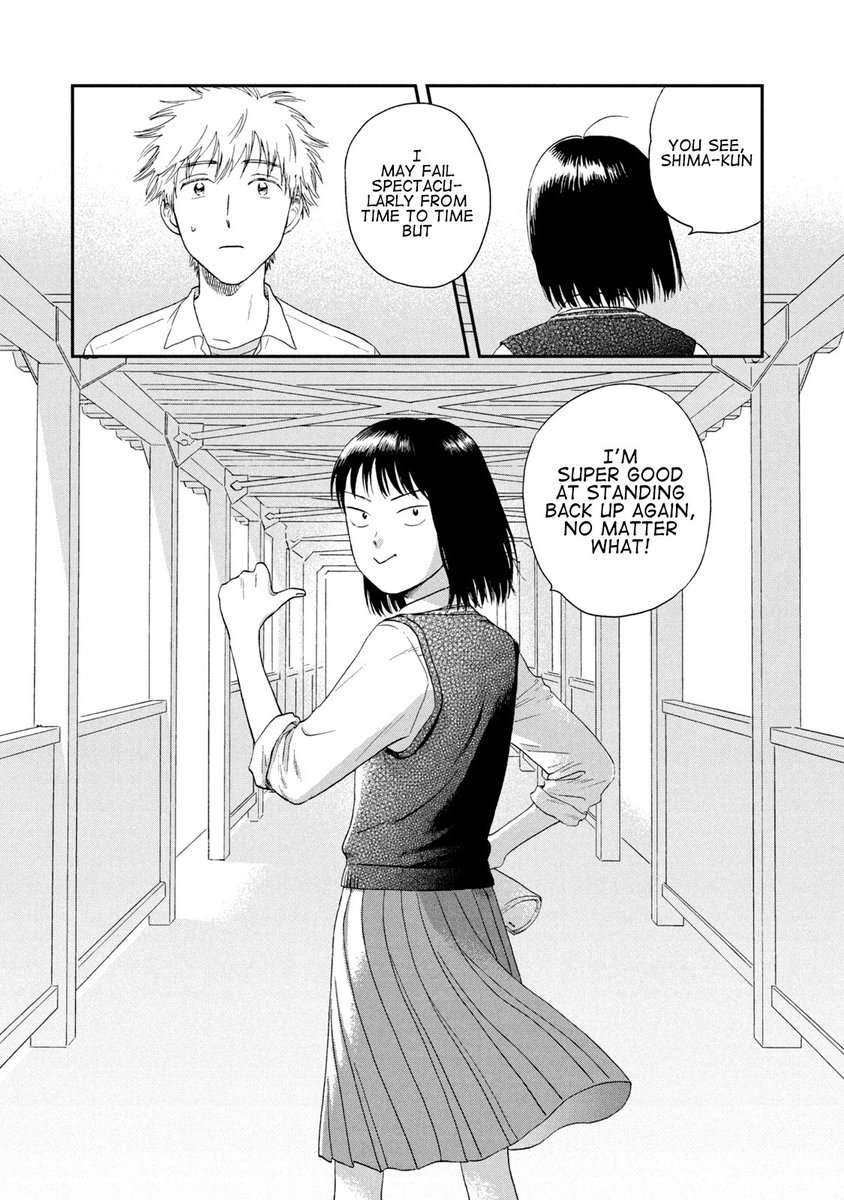Misaki Takamatsu speaks about her long-term serialization journey in Skip and Loafer (Translation)
January 31, 2025 | 30 min read
Behind the Creation of Manga, Vol. 16: Skip and Loafer with Misaki Takamatsu
Shuko Yokoi - Manga Writer
Shuko Yokoi explores the beginnings of manga stories by speaking with their creators in her series "Behind the Creation of Manga." In its 16th installment, she sits down with Misaki Takamatsu, the author of Skip and Loafer.
Skip and Loafer: A quick synopsis
Mitsumi Iwakura, a bright and earnest girl from rural Ishikawa Prefecture, enters a prestigious high school in Tokyo as the top student in her class. While navigating her new environment, her straightforward and slightly quirky personality begins to influence her classmates in ways she doesn't realize. Among them is Shima, the "popular boy," with whom she slowly builds a meaningful connection. A heartwarming school-life comedy about the subtle power of sincerity.
A hybrid of Shojo and Seinen manga?
Yokoi: Reading Skip and Loafer feels so uplifting. It’s quite different from your earlier works, like Ameko Hime or The Boat of Canaries.
Takamatsu: That’s true. When I first started submitting stories, I mostly worked on short, standalone pieces. The Boat of Canaries, for instance, was heavier in tone, which suited the shorter format. But when I struggled to get approval for long-running concepts, I began thinking, if it’s going to be a longer series, why not make it something that encourages and uplifts readers? That shift also led me to adopt a lighter art style.
from Chapter 1
Yokoi: Mitsumi’s expressions feel so vibrant and full of life.
Takamatsu: Thank you! I wanted her to feel cute but approachable, so I kept the lines simple and clean. During this time, I revisited shojo manga I loved as a student, like My Love Story!! by Aruko and Kazune Kawahara and My Little Monster by Robico. As a reader, I hadn’t noticed their subtle techniques, but revisiting them as a creator taught me a lot—how to leave certain lines out, how to balance coolness and cuteness in key panels.
from Chapter 2
Yokoi: Skip and Loafer is serialized in the seinen magazine Afternoon, but it feels like it carries the soul of shojo manga in many ways.
Takamatsu: I think it’s had a huge influence on me. Since it’s a seinen magazine, I initially explored themes that felt more fitting—like professions, clubs, or other specialized topics—but they didn’t align with what I truly wanted to write. For example, if I focused too much on character drama in a shogi (Japanese chess) manga, readers might start wondering, “What happened to the shogi? Where is this story even going?” But with a romance-based shojo manga, those concerns seem to fade. It’s such a fascinating genre that allows for more flexibility.
Yokoi: There’s that saying about storytelling: “Meet expectations, but subvert them too.” Romance seems to naturally leave room for unexpected turns, without rigidly fixed outcomes.
Takamatsu: Exactly. Romance is a theme without a set goal or a definitive “correct” path. Readers can imagine and interpret as they go, which makes it easy to follow and invest in. That’s why I borrowed the classic themes and structures of shojo manga as the foundation for Skip and Loafer. From there, I could focus on the characters and create a story that felt uniquely mine.
It starts off like a typical rom-com—a “city boy” falling for a “simple, country girl”—but gradually, it’s clear that the story isn’t quite what you’d expect. Predictability isn’t fun, so I worked to subvert expectations little by little, surprising and delighting readers along the way.
Turning the "Prince" character into someone who feels human
Yokoi: You’ve mentioned before that Mitsumi and Shima’s dynamic was inspired by Mitsunari Ishida and Sakon Shima from Ryotaro Shiba’s novel Sekigahara. But, um… the connection seems a bit distant now, doesn’t it?
Takamatsu: (Laughs) Yes, the original inspiration has almost completely disappeared. But reading Shiba’s masterpiece taught me something vital: strong characters are everything. Mitsunari in Sekigahara is this intelligent, somewhat prickly figure who rubs people the wrong way, while Sakon, his loyal retainer, sees through his awkwardness and thinks, “He’s so bad at expressing himself, but that’s kind of endearing.” I loved the idea of a relationship that embraces someone’s flaws.
from Chapter 1
Yokoi: It’s the kind of bond that goes beyond conventional labels like friendship or loyalty.
Takamatsu: Exactly. I wanted to explore that kind of relationship in a school setting. Of course, Sekigahara is steeped in war, which adds an intensity that wouldn’t suit a school-life comedy. So I gave Mitsumi some lovable quirks and made her more approachable to balance things out.
Yokoi: Mitsumi and Shima’s relationship feels refreshing—it’s not strictly romantic, yet it’s deeply compelling.
Takamatsu: That reflects my own high school experience. I had more fun with friends than anything else. I’d spend my allowance on manga instead of clothes, and I was so focused on art school that my mind was far from romance. Not everyone is caught up in love during their teenage years, and I wanted to depict that reality.
Yokoi: That balance of emotions feels universal. Are you the type to vividly remember your school days?
Takamatsu: I think so—memory might be one of my strengths. I remember the feelings, thoughts, and dynamics of those years very clearly. At first, I worried those details were too mundane to hold readers’ interest. But as I received feedback, I realized those “ordinary” parts were what readers connected with the most.
Yokoi: Many manga artists seem to have remarkable memories. It feels like a special gift.
Takamatsu: (Smiles) Maybe. But I also try to balance realism with gentleness. I don’t want the story to feel too raw or painful. Take Shima, for instance. At the beginning, he’s a "prince" type—a genuinely nice guy, but honestly, a bit too convenient. He’s the kind of character who inexplicably likes the protagonist and is always there to help her. At some point, though, I wanted readers to see, No, this guy is human too, with his own struggles.
The same goes for Mitsumi. I didn’t want her to be so good-natured that she came across as a saint. That would make her feel distant and less relatable. It’s about keeping the characters grounded while letting them shine.
from Chapter 55
The bond between Mitsumi and Shima: A journey through time
Yokoi: Are there any particular scenes that left a strong impression on you?
Takamatsu: There are many, but one that stands out is the moment in Volume 7 when Mitsumi and Shima, after briefly dating, decide to go back to being friends. It’s a scene that could only exist because of the long journey they’ve shared. It’s something they could only say to each other because of the foundation they’ve built as friends over time.
I was worried readers might dislike Shima for that decision, but thankfully, that wasn’t the case. There are so many moments like that throughout the series—ones that only became possible because I was able to continue the story all the way through to Volume 11. Those are the kinds of scenes that make long-running storytelling so rewarding.
from Chapter 46
Yokoi: That’s one of the joys of a long-running series—the time to explore those shifts.
Takamatsu: Absolutely. The teenage years are such a transformative time—like a sponge, you absorb so much and evolve in ways unique to that period. I want to keep exploring how personalities and relationships shift during those formative years. If readers can feel that growth alongside the characters, connect with their journeys, and cheer them on, that would make me incredibly happy.
A story rooted in home and the heart
Yokoi: One character that becomes more and more moving as the story progresses is Mitsumi’s aunt, Nao. The scene where she cries alone in her hometown in Ishikawa changes meaning as the volumes go on.
Takamatsu: Thank you for saying that. As I worked on the series, I realized that the story isn’t about declaring, “City life is better” or “The countryside is the best.” Through Mitsumi, I wanted to depict the warmth and openness of rural life. At the same time, Nao’s journey as a transgender woman allowed me to show that the city offers a space where some people can truly thrive and express themselves. It’s about finding where you belong and honoring both sides of that balance.
from Chapter 55
Yokoi: Mitsumi’s hometown is described as being “at the edge of Ishikawa Prefecture,” and Skip and Loafer has consistently included efforts to support the areas affected by the Noto Peninsula Earthquake. The 10th volume even had a special edition dedicated to disaster relief.
Takamatsu: I’m so grateful for all the people who have actively supported the relief efforts, especially during times when I couldn’t do much myself. It’s been a year since the earthquake, but the region has also suffered from heavy rains, and some areas still don’t have fully restored sewer systems. There’s a lot more to be done, and I plan to continue supporting these efforts moving forward.
A friend in the form of a story
Yokoi: Your acceptance speech at the Kodansha Manga Awards has stayed with me. You said, “When life feels like a battle against regret and loss, I hope my work can stand by readers like a friend, reminding them that it’s not just about those things.”
Takamatsu: As we grow older, it’s inevitable that we face moments of profound loss—whether it’s the death of someone close or other significant challenges. In those moments, instead of focusing on what’s gone, I think it’s important to realize, I had so much fullness in my life before this. That perspective can help us remember that we’ve been supported, loved, and fulfilled in ways we might overlook during hard times.
That’s the kind of feeling I want my stories to evoke. If Skip and Loafer inspires someone to reach out to a friend they haven’t spoken to in a while, or to summon the courage to connect with someone they care about, I’d be so happy. Human relationships often reward us most when we engage with them wholeheartedly, even if it takes some effort. It’s in those genuine, fearless moments of connection that we find something truly meaningful.
from Chapter 19
Extra (not in the original)
Have you ever wondered who is Shima Sakon and Ishida Mitsunari that Takamatsu-sensei mentioned? Here's something about them!
Shima Sakon and Ishida Mitsunari are two fascinating figures from Japan’s Sengoku period (1467–1615), an era of political upheaval and near-constant military conflict. Mitsunari was a high-ranking samurai and one of the key strategists for Toyotomi Hideyoshi, a unifier of Japan. Known for his intellect and strict adherence to rules, Mitsunari was often described as cold, calculating, and socially inept—qualities that earned him respect from some but disdain from many. His inability to navigate interpersonal relationships and his unrelenting idealism made him a polarizing figure in the Toyotomi camp.
On the other hand, Shima Sakon was a samurai who eventually became Mitsunari’s right-hand man, joining him during the latter’s rise in the chaotic power struggle following Hideyoshi’s death. Sakon was known for his military prowess, tactical skill, and charisma, which contrasted sharply with Mitsunari’s intellectual but often distant demeanor. Sakon reportedly referred to himself as a “wandering ronin” before aligning with Mitsunari, but once he joined, he was unwavering in his loyalty.
What made their relationship stand out was its deeply personal undertone, rare for a lord-retainer dynamic of the time. Mitsunari was a man who struggled to gain allies due to his blunt nature and rigid personality, yet Sakon saw beyond these traits. He recognized Mitsunari’s intelligence and idealism, appreciating his flaws as part of his humanity. In return, Mitsunari trusted Sakon in ways he couldn’t trust many others. Their bond went beyond strategy or battlefield hierarchy—it was grounded in mutual respect and understanding.
Their connection becomes especially poignant in the context of the Battle of Sekigahara (1600), one of the most pivotal conflicts in Japanese history. Mitsunari led the Western Army against Tokugawa Ieyasu’s Eastern Army, and Sakon played a significant role as a commander. Despite their combined efforts, the Western Army was decisively defeated, and both Mitsunari and Sakon met tragic ends—Sakon was mortally wounded in battle, and Mitsunari was later executed. Their fates reflect the collapse of their ideals in the face of political reality, but their loyalty to each other remains an enduring legacy.
In Sekigahara, a historical novel by Ryotaro Shiba, their relationship is portrayed with nuance, focusing not just on their roles in the war but on their personal dynamic. Mitsunari is painted as a misunderstood figure, awkward but driven by a sense of justice, while Sakon serves as his grounded, pragmatic counterpart. It’s this understated connection—marked by loyalty, respect, and a recognition of each other’s imperfections—that resonates deeply.
This dynamic, as Takamatsu-sensei mentions, subtly influenced the relationship between Mitsumi and Shima in Skip and Loafer. Shima, much like Sakon, begins as an idealized figure—a “prince” type who seems perfect but reveals vulnerabilities as the story progresses. Mitsumi, on the other hand, mirrors Mitsunari in her straightforwardness, occasional obliviousness, and quiet strength. Their connection isn’t easily categorized—it’s not purely romantic, nor is it strictly platonic. Instead, it’s about two people growing together, balancing each other’s strengths and weaknesses in a way that feels natural and deeply human.
The parallels between the historical duo and Takamatsu-sensei’s characters highlight the timelessness of certain human relationships. Whether it’s two samurai navigating the chaos of war or two high school students finding their place in the world, the essence of connection—flawed, messy, and quietly profound—remains the same. It’s not about perfection or grand gestures but about understanding and complementing each other in ways that make the journey worthwhile.

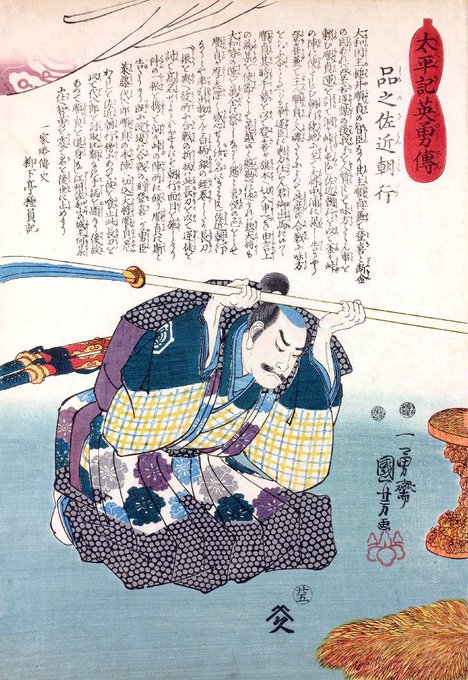
Ishida Mitsunari (left) and Shima Sakon (right)

